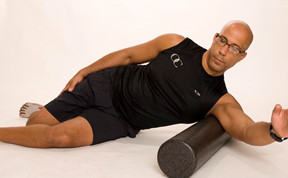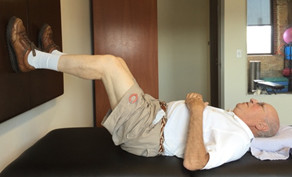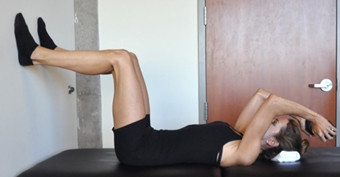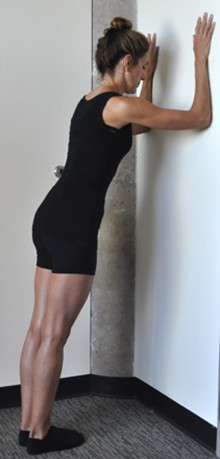有机会我会翻译成中文与大家探讨!
尽管在解决低腰问题的问题上已经得到了更多的关注,但几乎相同比例的人口在生活的某个阶段会遇到颈部问题。
由于这两个区域之间的亲密关系,在经历颈部问题的老年人中,有很大一部分会出现肩膀问题。
影响这些区域的最常见的问题之一是向前的头部和肩部的位置,它影响着颈部和肩部的姿势和运动。
作为综合训练计划的一部分,矫正运动是一种可行的策略,可以帮助老年人更好地发挥他们的颈部和肩部的功能。
这篇文章将概述如何在一个全面的训练计划中实施正确的练习,以帮助那些遇到与头部前倾和/或肩的问题相关的个体,并成功地实现他们的健康和健身目标。
Learning Objectives:
- Understand the impact of the forward head and shoulder position and their impact upon range of motion, strength, and general function of the neck and shoulder complex in older adults.
- Define the term corrective exercise and develop a corrective exercise strategy for successfully working with older adults that present with the forward head and/or shoulder position.
- Develop a strategy for releasing, activating, and integrating key concepts and cues to improve the forward head and shoulder position.
- Discover how to integrate corrective exercise strategies into the fundamental movement patterns necessary for improving neck and shoulder function in older adults.
Introduction
While it is recognized that a significant portion of the population will experience low back issues, nearly an identical percentage (70%) of individuals will experience neck pain as well (Jull et. al. 2008). Similarly, a large proportion of the population will experience shoulder issues. In 2006 for example, there were 7.5 million visits for shoulder problems (American Academy of Orthopedic Surgeons). After the low back, neck and shoulder issues are the second and third leading musculoskeletal-related causes of visits to medical professionals (Jo et. al. 2012).
One of the most common clinical findings that contributes to neck and shoulder issues in the older adult population is the forward head and shoulder posture. This familiar posture is characterized by the head and shoulder complex being positioned in front of the thorax with the upper cervical spine in extension and the lower cervical spine in flexion. The scapula are often ‘winged’ or positioned in downward rotation and anterior tilt.
It is important to note that forward head and shoulder posture is not necessarily a problem if the individual is able to relatively adjust their posture and move themselves out of this position when performing functional activities and/or loading the upper extremities. Unfortunately, most individuals that present with the forward head and shoulder posture maintain this alignment as they perform functional activities and when loading their shoulders. Consequently, this posture is not only perpetuated throughout daily activities, repetitive use and loading of the neck and shoulder complex while in the forward position can lead to a host of musculoskeletal issues such as chronic myofascial tension, headaches, rotator cuff issues, osteoarthritis and even neurological conditions such as cervical radiculopathy and thoracic outlet syndrome.
Implementing a comprehensive program consisting of corrective and functional exercise is an effective strategy for improving alignment and control of the forward head and shoulder position. This article will discuss a few common as well as an over-looked cause of the forward head and shoulder position, what corrective exercise is, and how it can be seamlessly integrated into an overall training program designed to help older clients work towards successfully accomplishing their functional goals.
Common Causes of the Forward Head and Shoulder Position
There are a multitude of factors contributing to the forward head and shoulder position. Chronic desk work, use of smart phones and similar devices, non-optimal standing and sitting postural habits, and a sedentary lifestyle all can contribute to this posture in older adults. Naturally, injuries following traumatic events such as motor vehicle accidents, falls on an outstretched arm, and concussions, can alter head, neck, and shoulder alignment and therefore impact function as well.
Another common and over-looked cause of neck and shoulder issues is surgery. Due to the direct osseous as well as vast myofascial and neurological connections between the neck, shoulder, and thorax, a significant portion of individuals that have had abdominal, pelvic, and/or chest surgery will experience neck and shoulder issues. Surgery on the abdomen, pelvis and/or chest often leads to a host of musculoskeletal and neurologic driven issues including decreased mobility of the rib cage or spine secondary to restrictions related to scar tissue and myofascial compensations, over-active neck or shoulder muscles secondary to proprioceptive deficits and muscle weakness of the core, and alterations in breathing (Mattek and Fisher 2017, Osar 2015, 2017). These changes often manifest as chronic neck and shoulder issues and warrant further investigation by a qualified therapist.
The forward head and shoulder commonly leads to myofascial and joint issues in the neck that can either create local problems or manifest distally as upper extremity issues. This often makes it challenging to differentiate between issues originating from the neck and those that are related to the shoulder. As noted, pain from the cervical spine can be localized to the neck region, can refer out to the shoulder, or when significantly impacting a cervical nerve root (nerve exiting the spinal cord in the neck) or the brachial plexus (nerve complex consisting of nerves coming from C5-T1), cause nerve-type sensations (numbness, tingling, pins and needles sensations) into the upper arm, forearm, and/or hand (McKenzie 2011, Sahrmann and Associates 2011). Any client exhibiting these types neurological signs should be referred out to an appropriate health care professional.
The forward head and shoulder position can also impact proprioception and therefore muscle activity in these regions. Mechanical receptors (proprioceptors located within muscles, fascia, ligaments, and joint capsules) in the neck are important structures for providing continual proprioceptive feedback to the central nervous system about body position and movement. Pain can create immediate and often times, dramatic changes in the mechanical receptors, which consequently impact muscle function (Jull et al. 2008). Further complicating the issue is that individuals that have experienced whiplash injuries often demonstrate changes in muscular activity of the neck muscles even after the pain subsides (Jull et al. 2008). Similar to changes reported in the low back, individuals experiencing chronic neck pain tend to have atrophy of the deep stabilizers of the neck muscles including the suboccipitals and multifidi and increased activity of the superficial neck muscles (Jull et. al. 2008).
The forward head position directly affects posture as well as loading through the neck, which can also contribute to shoulder issues. The nerves innervating the shoulder and upper extremity primarily exit the neck and upper back at the levels of C5-T1. Alterations in the head and neck position often impact one or more of these levels and commonly contribute to muscular inhibition of the shoulder muscles being innervated by these nerves (Osar 2017). Additionally, the forward shoulder position further perpetuates postural and movement issues of the head, neck, and upper thorax.
Once cleared to exercise, older individuals experiencing neck and/or shoulder issues related to the forward head and shoulder position are best served by working with a qualified fitness professional who can help them develop a safe and effective program for addressing their posture and movement while working towards accomplishing their health and fitness goals. However, it goes without saying that when working with the older individual with neck and/or shoulder issues, it is imperative that the health or fitness professional works within their scope of practice and ensures the individual has been appropriately evaluated and cleared to exercise. An immediate referral to a health care professional is required if the clients presents with neurological signs such as numbness and tingling prior to, during, or after the session.
Implementing a Corrective Exercise Strategy
Corrective exercise is an effective approach for addressing the forward head and shoulder position and the related issues including chronic tightness, muscle imbalances, discomfort, and/or proprioceptive changes related to alterations within the mechanoreceptors. In the Integrative Movement System Corrective Exercise Approach ™ (IMS-CEA), corrective exercise is defined as an exercise-based strategy aimed at addressing the underlying cause(s) of chronic tightness, discomfort, and/or an inability to perform at the level one would like or expect (Osar 2015, 2017). Rather than a substitute for traditional strength training or mobility exercises, corrective exercise should be considered an integral part of an overall training program. Thereby, corrective exercise should enhance and never inhibit an individual’s ability to improve strength, speed, endurance, flexibility or whatever one’s functional goal(s) may be.
Prior to instituting a corrective exercise strategy, performing a thorough assessment is key in uncovering the underlying, driving, or contributing factors to the client’s issues and/or decreased performance. While it is beyond the scope of this article to discuss all the nuances, a thorough assessment would include posture, range of motion, and more dynamic or movement-based evaluations. If it is within the fitness professional’s scope of practice, muscle testing can also be a valuable tool to help evaluate for muscle inhibition and substitution strategies. While there’s a multitude of assessments that can be performed, the fitness professional will choose the ones that are within their scope of practice and the ones from which they can gather the most information. Recognize that the information gained from the assessment process is more important than the actual assessments one is using. This information will guide the fitness professional in choosing the most appropriate and specific corrective and functional exercises.
In the IMS-CEA, there are three specific components to helping individuals work towards their goals once they have been assessed: release, activation, and integration (Osar 2015, 2017). As noted, the information gained during the assessment process will then direct the fitness professional to where the individual has deficits in range of motion, mobility, and/or strength. The first step of the corrective exercise process is to release the structures that are inhibiting the client from achieving a range of motion or necessary mobility. Next, activate the inhibited muscles necessary to help the client stabilize a specific position or movement pattern.
Finally, to improve posture, movement, and achieve the individual’s functional goals, the fitness professional must integrate the concepts from the corrective exercise strategy into the fundamental movement patterns. The movement patterns most pertinent to the head, neck, and shoulder are pushing and pulling patterns. The ultimate success of any training program designed for individuals experiencing the loss of performance or chronic posture/movement issues is predicated upon how effectively the client incorporates the information from the corrective exercise strategy into both their fundamental movement patterns as well as their functional goals (Osar 2015, 2017). The forward head and shoulder posture will necessitate incorporating postural modification or there is a great likelihood that the individual will revert back to their previous postural and movement strategy (McKenzie 2011, Sahrmann 2002, Osar 2012, 2015, 2017).
Incorporating Corrective Exercise into a Program
Following is an example of how to integrate corrective exercise into an overall strength program for the older client with the forward head and shoulder posture. While there will be obvious individual variability, there are common findings with individuals presenting with the forward head and shoulder position. These include:
- Over-compression of the upper neck, tension in the lower neck and upper thorax
- Downward rotation and anterior tilt of the scapula (also known as the ‘winged’ scapula)
- During overhead motion of the arm there is poor ability to dissociate their arm from their trunk resulting in compensating by either elevating their shoulder or hyperextending at the thoracolumbar junction
- A non-optimal breathing strategy related to overusing accessory respiratory muscles such as: sternocleidomastoid and pectoralis minor rather than the diaphragm, intercostals, transversus abdominus, and deep neck flexors which perpetuates tightness and muscle imbalances around the head, neck, and shoulder regions.
Corrective exercise is an effective way to address common range of motion, stabilization, and movement issues associated with the forward head and shoulder position. The following three-step corrective exercise strategy has been used clinically to work with older adults with the forward head and shoulder position (Osar 2017).
- Release myofascial gripping (over-active muscles and/or fascial restrictions) around the head, neck, trunk, and shoulder complex to restore overall mobility and range of motion. Several of the most commonly short, tight, and/or overactive muscles contributing to the forward head and shoulder position include the sternocleidomastoid, levator scapula, suboccipitals, cervical erector spinae, pectoralis minor, latissimus dorsi, and teres major.
- Activate the inhibited muscles around the neck, trunk and shoulder complex. Improving neuromuscular activation of the deep cervical muscles (longus colli and capitis), the upward rotators and posterior tilters of the shoulder complex (serratus anterior, upper and lower trapezius), and primary muscles of respiration such as the diaphragm and intercostals help to improve control around the neck, shoulder and trunk.
- Integrate the acquired range of motion and stability into the fundamental pushing and pulling movement patterns necessary to help the individual progress towards achieving their health and fitness goals.
Release

First, release is required around the regions of myofascial (muscles and their investing fascia) restrictions and/or muscular gripping (over-contracted muscles). The foam roller is an effective tool to release myofascial restrictions and/or gripping around the shoulder complex (image 1 demonstrating release of the latissimus dorsi and teres major). If it is within one’s scope of practice, manual therapy is also an effective strategy for releasing chronic myofascial tone or gripping of muscles that tend to be short and tight and inhibiting optimal range of motion or joint mobility.
Activate

Next, the client will perform a pattern such as Supported Happy Baby Breathing to address three-dimensional breathing, reduce chronic tension around the neck and shoulder, improve overall alignment, and activation of the deep neck muscles. Clients with a forward head position will require support under their head and neck to keep them aligned with their trunk. Note the support under the client’s head and neck to keep the head and neck supported and relatively aligned with his trunk and spine (image 2).
Coordinating three-dimensional breathing from the Supported Happy Baby position is important for improving neck and shoulder function for several reasons:
- Three-dimensional breathing promotes relaxation of myofascial gripping and tension around the head, neck, trunk, and shoulder complex while improving overall alignment of the head, trunk, spine, and pelvis.
- Three-dimensional breathing activates the primary muscles of respiration – diaphragm and intercostals – and reduces the need for over-relying on the accessory muscles of respiration including the sternocleidomastoid and pectoralis minor.
- From the Supported Happy Baby position, using cuing and/or imagery by having the individual perform a gentle ‘chin nod’ (as if the individual is lightly nodding ‘yes’) or to imagine a string gently pulling the back of their head long can improve activation of the deep cervical muscles and relax the superficial musculature.
(Jull 2011, Osar 2012, 2015, 2017)
In the Supported Happy Baby position, have the individual feel as if their spine is being gently guided by the back of the head away from the trunk. Cue the individual to breathe into their ribs as well as down into their pelvis while keep their neck, shoulder, and hips relaxed. They should breathe in through the nose and out through their mouth with the goal of exhaling approximately twice as long as they inhale. It is important they don’t force or rush their breath so they don’t hyperventilate during the process. Perform 3-5 sets of 3-5 breaths per set.

The Dumbbell Pullover Pattern from the Supported Happy Baby Breathing (figure 3) is an excellent pattern to coordinate breathing and core stability with shoulder dissociation (movement of the shoulder independent of the trunk). The individual grasps a light dumbbell at both ends and holds it over their chest. They breathe in and then as they breathe out they slowly lift the arms overhead while controlling the alignment of their trunk, spine, and pelvis. They breathe in to bring the weight back to the starting position. They should be cued to keep their shoulders ‘open and wide’ and there should be no motion of the head, neck, trunk or spine while the arms are moving. Perform 2 sets of 8-10 repetitions.

The Modified Wall Plank is an effective pattern for restoring upward rotation and posterior tilt of the scapula while developing more optimal alignment and control of the neck and shoulder position (figure 4). The individual faces the wall and places their forearms against the wall just in front of their shoulders. They are cued to keep their spine long as if they are being pulled up from the back of their head, maintain their rib cage alignment over their pelvis, and feel as if they are gently pulling the door apart between their hands. From this position, they will perform 3 sets of 3-5 breaths relaxing their arms in between each set. Helpful cues to promote neck and shoulder alignment are to visualize ‘being pulled towards the ceiling from the back of the head’ and ‘maintaining width’ between the front of their shoulders during this pattern.
The Modified Wall Plank pattern with Arm Slide is a progression that helps develop the optimal alignment and control required for moving the arm overhead without compensations. The individual will set up in the Modified Wall Plank pattern as previously described and then slowly slide one arm up the wall and then return it to the starting position. They will alternate sliding each arm up the wall for 2 sets of 5-8 repetitions per side.
Integration
Finally, the fitness professional will help their client integrate the alignment, breathing, and control developed through the corrective exercise strategy into the fundamental movement patterns. Optimal alignment, breathing, and control should be coordinated into all pushing and pulling patterns so that each exercise within the client’s program continues to reinforce and integrate the newly acquired posture, range of motion, as well as movement strategy.
Conclusion
Many older adults will present with the forward head and shoulder position, which can impact both their postural and movement strategy. The forward head and shoulder position is often consistent with movement-related issues of the neck and shoulder complex that frequently contributes to a host of musculoskeletal as well as neurological issues. Corrective exercise is an integral component of an overall program for improving range of motion, strength, and stability of the neck and shoulder complex in individuals who present with the forward head and shoulder position.
Within the Integrative Movement System Corrective Exercise Approach, improving alignment, breathing, and control is an effective strategy for helping older adults develop more optimal posture and movement. Following the release of myofascial restrictions and muscle guarding and activation of inhibited muscles, the IMS-CEA approach provides the fitness professional with a strategy for seamlessly integrating the key concepts from the corrective exercise strategy into the functional exercise patterns that will aid the older client in improving posture and movement efficiency. Ultimately, corrective exercise as part of an overall training program provides the older client with a strategy for successfully moving towards accomplishing their health and fitness goals.
References:
American Academy of Orthopedic Surgeons. Common Shoulder Injuries. Retrieved from: http://orthoinfo.aaos.org/topic.cfm?topic=A00327
Jo, H.J., Shin, M.H., Hur, J.W., Kim, J.S., Ryu, K.S., Park, C.K. (2012). Unrecognized Shoulder Disorders in Treatment of Cervical Spondylosis Presenting Neck and Shoulder Pain. Korean Journal of Spine; 9(3):223-226.
Jull, G., Sterling, M., Falla, D., Treleaven, J., O’Leary, S. (2008). Whiplash, Headaches, and Neck Pain. St. Louis, MO: Churchill Livingston Elsevier.
Mattek, J. and Fisher, S. (2017). What Lies Beneath: The under-realized effects of breast, abdominal, and pelvic surgeries. St. Bernardino, CA: Niche Pressworks.
McKenzie, R. (2011). Treat Your Own Neck. 5th Edition. Raumati Beach, New Zealand: Spinal Publications New Zealand Ltd.
Osar, E. (2012). Corrective Exercise Solutions for Common Hip and Knee Dysfunction. Chinchester, UK: Lotus Publishing.
Osar, E. (2017). Integrative Corrective Exercise Instructor: Training the Older Client. Chicago, IL: Institute for Integrative Health and Fitness Education course handouts.
Osar, E. (2015). The Integrative Corrective Exercise Approach. Video retrieved from Fitness Revolution: http://integrativecorrectiveexercisespecialist.com/
Sarhmann, S. (2002). Diagnosis and Treatment of Movement Impairment Syndromes. St. Louis, MO. Mosby.
Sahrmann, S. and Associates. (2011). Movement Impairment Syndromes of the Extremities, Cervical and Thoracic Spines. St. Louis, MO: Elsevier.
.jpg)
 普通会员
普通会员